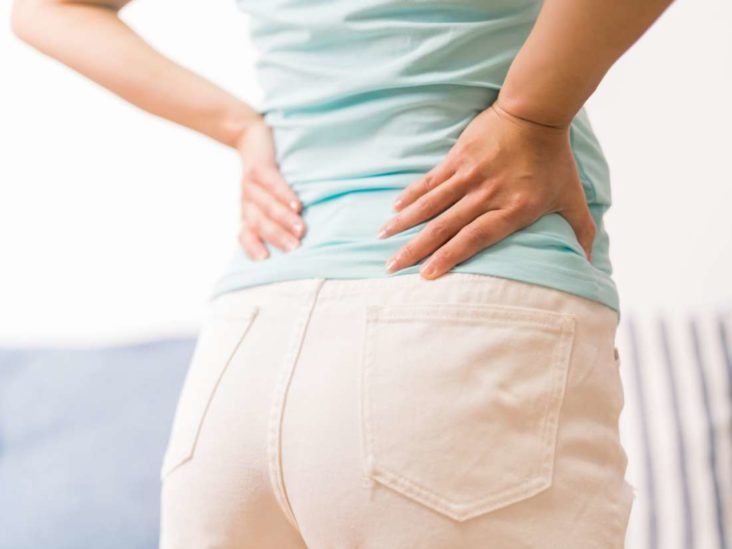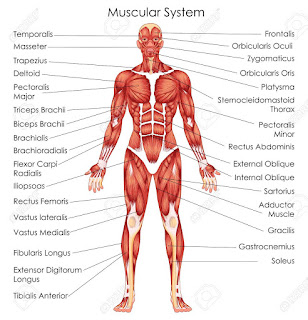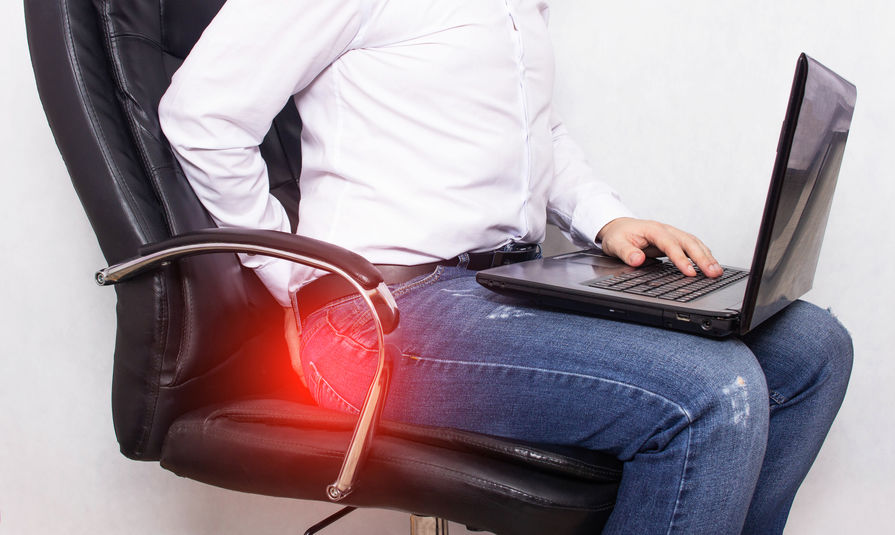Muscle nature by Dr S. Chidambaranathan B.H.M.S, M.D Homeopathy Doctor Madurai (Treatment avail for all people around the world)
The flesh is the essential organ of the body and responsible for body movement. From olden days, muscles remain the language of power. A well-built masculine body is always admired by everyone. Even though strong bones also account for power and stronger action, muscles sweep the credit on the whole by showing action and covering the bones. Muscle acts as the reservoir for force. Without muscles no one can move, work, play, eat or even breathe, and life will be a paralysed one with difficulty in survival.
Muscle constitutes about 40 per cent of body weight i.e. more than the weight of bones (20-25 per cent) or fat (25-30 per cent). Their shape, size and action usually vary from person to person and according to the place of origin. Muscles are usually attached to the bones by condensed muscle fibres i.e. tendons and supported by fibrous tissues i.e. ligaments. Muscles act on the girdle of bones with the stimulus of nerves, i.e. with lever (bones) and current (nerve stimulation /signals), any type of job can be carried out with contraction and relaxation of the muscles.
Composition and colour of muscle – All muscles are made of bundles of muscle fibres, namely myofibrils. They are arranged mostly in a parallel manner and sometimes overlap. The muscle fibres are made up of proteins (30 per cent) and water (70 per cent). The other constituents are Ca, potassium, ATP (Adenosine triphosphate), glucose, creatine, enzymes, vitamins, etc., which are all very essential energy source for muscular contraction and relaxation. The active proteins of the muscles are actin and myosin.
The colour of the muscle is due to the red iron protein, i.e. myoglobin (like haemoglobin in blood) present in the cytoplasm / sarcoplasm of the myofibrils. The colour of the muscle normally varies i.e. from velvety red to white or pallor depending upon the concentration of myoglobin and oxygen.
Source of muscle energy – The instant energy for muscle contraction is usually derived from ATP. The source of energy usually comes from carbohydrate and fat from ingested food. During aerobic exercises (gentle jogging, swimming, walking, etc.) the energy for muscle functions will be derived using oxygen supply from blood, whereas in the case of anaerobic exercises (short period vigorous exercise – gym activities) muscular contraction will be more where it occludes the blood vessels which supply oxygen. So, an alternative route of energy utilisation from glucose will be made out. In this case, lactic acid and pyruvic acid occur as waste products. More accumulation of these waste products causes pain and cramps.
Nature of muscle function – Muscle can act fast or in a slow manner. It starts functioning on getting stimulus from nerve endings. Muscle can even contract less than a fraction of second i.e., 0.2-0.3 secs. Usually, all the muscles always remain in partial contracted state. Complete and sustained contraction is called contracture and complete relaxation indicates paralysis. The muscle functions depend on the conduction power, tone, elasticity and contractility. With proper functions and exercise training, muscle will become bulk with power, good reflex and excellent coordination of movements.
Strength of Muscle – Muscle can be developed or strengthened by continuous use (i.e. training and straining muscles in gym or work) like using brain (which gets sharpened through learning). Normally, one relates the size of the muscle to power. But actually, it is not so. Regular exercise and training only endorces it. For example, even though leg muscles seem to be bigger and look stronger, tongue and massester (chewing muscle) are the most powerful muscles of the body. The collective presence of muscle bundles with overlapping nature, working angle and working mode get this credit in spite of small muscles.
The maximum strength of a male will be attained in the age of 20-30 due to hormones – i.e. Testosterone. This male hormone is the energizer for the muscle. After puberty, the muscle mass increases in man due to increased secretion of testosterone but in females, fat deposits increase due to feminine hormones. The muscle power of females will be usually 30 per cent less compared to males. Even though females compete with males in all fields in this competitive world, nature has provided less power to females. Also strength of the muscle depends on the training, speed, angle of work and finally heredity too. Muscle works physiologically as well as psychologically (with will power of mind or courage). Cold environment/temperature and fatigue reduces the power of muscles. Likewise, exposure to very high temperature will bring severe muscular contractions or cramps, i.e. sun stroke, reducing muscular power.
Role of Muscle in our body
- It gives good shape to the body
- It supports bones, joints, blood vessels, nerves, inner organs, etc.
- It aids in movement of the body
- It aids blood circulation with contraction i.e., muscle pump (as heart does)
- It also helps body to maintain body temperature – Contraction and relaxation / stretching i.e. work out in muscle produces heat. The shivering of the body during cold season or fever is an attempt to produce more heat in the body
- Finally, it also helps in forming walls of the heart, blood vessels, etc. and also for separation of the compartments ( diaphragm separates chest from abdomen)
- Skeletal or striated muscles – These muscles are long and slender i.e. cylindrical in shape. They can be divided into transverse bands (striations). It covers and binds skeletal bones and aids in locomotion with contraction and relaxation. It also helps to work (either major work or fine work) related to the body or environment. So, losing these muscle functions make one paralysed.
- Smooth or non-striated muscle – These muscles are spindle in shape. They are found especially in blood vessels, food tube, stomach, intestines, rectum, bronchus, bladder, uterus, etc. These muscles help in transport of blood through the body, transport of air into the lungs, transport of food through food tube, stomach, intestines with peristalsis movement, etc. So, surviving will be difficult if one were to lose these muscle functionsas it becomes difficult to distribute nutrients properly throughout the body. The severe contraction of these muscles will cause colicky pain.
- Cardiac muscles – Cardiac muscle is made of special striated muscles which work involuntarily. It contracts and relaxes in rhythmic pattern.
- Voluntary muscles – Muscles that work under our control are called voluntary muscles. For example – all striated or skeletal muscles (exception – cardiac muscle). These muscles help in locomotion anchoring bones with tendons. Standing or sitting or running or walking, chewing, etc., are all due to the contraction and relaxation of these muscles only.
- Involuntary muscles – These muscles work on their own (i.e. without our conscious effort) for natural day-to-day requirement of the body. For example, peristaltic movements of the intestines which transport ingested food, contraction and dilatation of the blood vessels which project blood, etc., are due to the action of these muscles only. It works subconsciously with the help of nervous system and hormones. All smooth muscles are involuntary muscles.
- Isometric contraction – Refers to muscle contraction where its length remains the same. Here tone of the muscle increases to give power to lift, to stabilise, to hang, to give force, etc. In these contractions, all the energy will be converted into heat without any work or movement.
- Isotonic contraction – Refers to muscle contraction where its tone i.e. Tension, remains the same. Here muscle gets shortened or stretched/elongated to provide movement of the parts involved. For example, kicking, throwing, pushing, etc. Muscles twitching also belongs to this type. In these contractions, energy will be utilised both for movement and heat production.
Body building – On increased usage i.e. with strenuous work or gym workout, muscle use to get bulge in size and get more vigour in strength. Here the number of muscle fibres remain the same, but only the size gets increased. Exercises increases blood circulation to the muscles and thus increases its efficiency and endurance.
For quick attainment of muscle mass, action, strength and efficiency, some people use anabolic steroids (synthetic androgen – male hormone) in sports. Use of this steroid will benumb muscles and mask pain occurring due to overstretching or overexertion. They do this so they can work out with more spirit and vigour without any pain or cramps. But, the use of anabolic steroids can be detected with blood analysis and urine analysis, so those who try to cheat can easily be found and can be thrown out of the game in case of malpractice.
Atrophy of muscles – Muscle mass will decrease with respect to power and size with age, lack of nutrition, dehydration, fatigue, non-use and diseases. Un-used muscles will crumble in size on their own and get atrophied. Likewise, any continued contraction or relaxation will damage the muscle. For example, continued contraction occurring in case of tetanus due to neurotoxin will stimulate nerves continuously to produce continuous muscular contraction in a severe manner to endanger life. Here, oxygen supply will be arrested due to obliterated blood vessels and contracted lungs with strong continued contractions. Continued relaxation in case of bedridden / immobilised / paralysed / serious illness will also cause muscular atrophy or wasting of muscles with reduction in blood supply and power.
Problems often occuring in muscles is cramps – It may be either due to nutrition loss or excessive usage or strenuous exercise or disease.
Homeopathic Medicines should be taken under the advice and diagnosis of a qualified Homeopath.





























Social Plugin